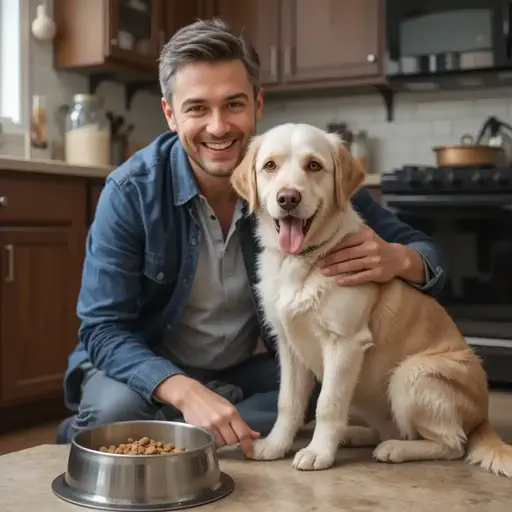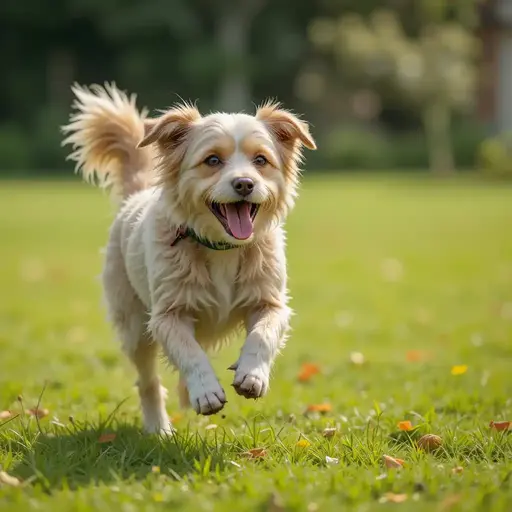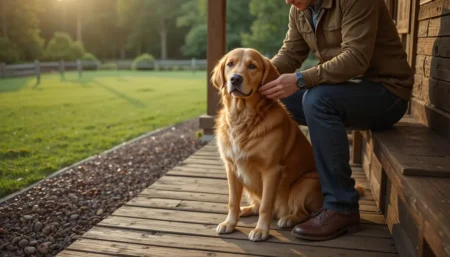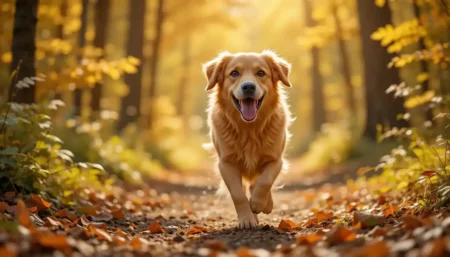The best dog food for senior dogs over 10 years old is a diet that supplies high‑quality, highly digestible protein (≈ 28‑32 % on a dry‑matter basis), moderate calories, and added joint‑support nutrients such as glucosamine, chondroitin, and marine‑source omega‑3 fatty acids.
Want a senior pup that stays strong, mobile, and happy? Read on to discover why ordinary “senior” labels often miss the mark and how to pick a truly nourishing formula.
Why Senior Dogs Need Special Nutrition
A dog’s body changes dramatically after the tenth birthday. Metabolism slows, muscle mass wanes, joints stiffen, and organ function can decline. Feeding the best dog food for senior dogs means matching nutrition to these shifts, not just swapping an adult kibble for a “senior” label.
Slower Metabolism
- Energy expenditure drops 15‑20 % compared with prime‑age dogs.
- Excess calories quickly become body fat, increasing joint stress.
Muscle Maintenance
- Sarcopenia (age‑related muscle loss) can begin as early as 8 years.
- High‑quality protein with a balanced amino‑acid profile helps preserve lean mass.
Joint Health
- Cartilage thins and synovial fluid becomes less viscous.
- Glucosamine, chondroitin, and EPA/DHA omega‑3s support repair and reduce inflammation.
Digestive Efficiency
- The aging gut produces fewer digestive enzymes and less acid.
- Prebiotic fibers (e.g., chicory root) and probiotics keep the microbiome balanced for optimal nutrient uptake.
Organ Function
- Kidneys and heart work harder to filter waste as dogs age.
- Controlled phosphorus, sodium, and potassium levels protect these vulnerable organs.

Common Health Challenges in Dogs Over 10
Understanding typical age‑related problems helps you select a diet that directly addresses them.
Arthritis & Joint Degeneration
- Up to 20 % of dogs over eight show osteoarthritis signs.
- Pain and stiffness reduce activity, which can trigger weight gain.
Dental Problems
- Periodontal disease, tooth loss, and gum inflammation are common.
- Chewing dry kibble can become painful, leading to reduced food intake.
Weight Fluctuations
- Some seniors gain excess fat, while others lose muscle despite eating enough.
- Both extremes raise the risk of diabetes, heart disease, and reduced lifespan.
Reduced Appetite
- Diminished smell, gastrointestinal slowdown, or chronic illness can suppress hunger.
- A bland‑tasting, aromatic diet can rekindle interest in meals.
Common Health Challenges in Dogs Over 10
Understanding typical age‑related problems helps you select a diet that directly addresses them.
Arthritis & Joint Degeneration
- Up to 20 % of dogs over eight show osteoarthritis signs.
- Pain and stiffness reduce activity, which can trigger weight gain.
Dental Problems
- Periodontal disease, tooth loss, and gum inflammation are common.
- Chewing dry kibble can become painful, leading to reduced food intake.
Weight Fluctuations
- Some seniors gain excess fat, while others lose muscle despite eating enough.
- Both extremes raise the risk of diabetes, heart disease, and reduced lifespan.
Reduced Appetite
- Diminished smell, gastrointestinal slowdown, or chronic illness can suppress hunger.
- A bland‑tasting, aromatic diet can rekindle interest in meals.

How the Best Dog Food for Senior Dogs Addresses Those Issues
A well‑formulated senior diet tackles the challenges above with targeted nutrients and balanced energy.
- Joint Support:
- Glucosamine (≥ 500 mg/kg) and chondroitin (≥ 400 mg/kg) stimulate cartilage synthesis.
- Omega‑3 EPA/DHA (≥ 1 % of total fat) dampens inflammation and eases pain.
- Muscle Preservation:
- High‑digestibility protein (≥ 28 % DM) from named animal sources (chicken, salmon, turkey).
- Leucine and arginine are emphasized to stimulate muscle protein synthesis.
- Digestive Health:
- Prebiotic fiber (e.g., chicory root, pumpkin) at 2‑4 % of the formula.
- Probiotic strains such as Lactobacillus acidophilus (≥ 10⁸ CFU/g) maintain gut flora balance.
- Caloric Balance:
- Energy density is typically 330‑360 kcal/kg (dry).
- Fat content kept ≤ 10 % to limit excess calories while preserving essential fatty acids.
- Cognitive & Immune Boost:
- Antioxidants (vitamin E, selenium, blueberries) protect brain cells from oxidative stress.
- Medium‑chain triglycerides (MCTs) improve mitochondrial efficiency in older brains.
Key Nutrients to Look for in the Best Dog Food for Senior Dogs
| Nutrient | Role in Senior Dogs | Typical Sources | Recommended Level (DM) |
|---|---|---|---|
| Protein | Maintains lean muscle, supports immune function | Deboned chicken, salmon, turkey, eggs | 28‑32 % |
| Glucosamine | Stimulates cartilage repair | Added glucosamine HCl or sulfate | ≥ 500 mg/kg |
| Chondroitin | Enhances joint lubrication | Added chondroitin sulfate | ≥ 400 mg/kg |
| Omega‑3 EPA/DHA | Reduces joint inflammation, supports skin & coat | Fish oil, salmon meal, krill oil | ≥ 1 % of total fat |
| Prebiotic Fiber | Promotes gut health, improves stool quality | Chicory root, beet pulp, pumpkin | 2‑4 % |
| Probiotics | Balances microbiome, aids digestion | Lactobacillus spp., Bifidobacterium spp. | ≥ 10⁸ CFU/g |
| Antioxidants | Counters oxidative stress, supports cognition | Blueberries, spinach, vitamin E, selenium | Adequate RDA (e.g., vitamin E ≥ 30 IU/kg) |
| MCTs | Improves brain energy metabolism | Coconut oil, purified MCT powder | 2‑4 % of total fat |
| Calcium‑Phosphorus Ratio | Protects bone health & kidney function | Calcium carbonate, dicalcium phosphate | 1.2 : 1 to 1.4 : 1 |
Tip: When the guarantee analysis lists “protein % (minimum)”, the value is on a wet‑matter basis. Convert to dry matter (DM) by dividing by the moisture percentage and multiplying by 100 to see the true protein density.

Reading Labels: What Makes a Food the Best Dog Food for Senior Dogs?
A marketing label can be deceiving. Use the checklist below to separate science from hype.
- Identify the First Three Ingredients
- Look for named animal proteins (e.g., “deb… chicken” or “salmon”) as the top three.
- Avoid vague terms like “meat by‑product” or “animal digest”.
- Check the Guarantee Analysis
- Protein: ≥ 28 % (dry).
- Fat: ≤ 10 % (dry) for calorie‑controlled formulas.
- Fiber: 3‑5 % (dry) to aid digestion without excess bulk.
- Spot Joint‑Support Additives
- Look for “glucosamine”, “chondroitin”, “omega‑3”, “EPA/DHA” in the ingredient list or nutrient profile.
- Verify AAFCO Certification
- The label should state “Formulated to meet the nutritional levels established by the AAFCO Dog Food Nutrient Profiles – Senior (10 yr +).” This signals a balanced, complete diet.
- Assess Additives and Preservatives
- Natural preservatives (mixed tocopherols, rosemary extract) are preferable to BHA/BHT.
- Artificial colors or flavors are unnecessary for senior health.
Ingredient List Tips
| What to Look For | Why It Matters |
|---|---|
| Deboned poultry or fish | High digestibility and essential amino acids |
| Whole grains or grain‑free legumes | Provide carbohydrates; watch for excessive carbs in grain‑free formulas |
| Omega‑3 sources: fish oil, krill | Joint & brain health |
| Prebiotic fibers (chicory root, beet pulp) | Gut health |
| Antioxidants (blueberries, vitamin E) | Cognitive support |
Calorie Management and Portion Control
Even the most nutritious senior formula can cause weight gain if overfed. Follow these steps:
- Calculate Resting Energy Requirement (RER)
text{RER (kcal/day)} = 70 \times (\text{Body weight in kg})^{0.75} - Adjust for Activity & Age
- Low activity / sedentary: Multiply RER by 0.8‑0.9.
- Moderate activity (daily walks): Multiply by 1.0.
- Arthritic or obese senior: Use the lower end of the range.
- Determine Food Amount
- Find the kcal per cup or can on the packaging.
- Divide the daily kcal target by the kcal per serving to get the number of cups/cans.
- Monitor Body Condition Score (BCS)
- Use a 9‑point scale: 1 = emaciated, 9 = obese. Aim for 4‑5.
- Re‑weigh every 2‑4 weeks and adjust portions by 5‑10 % as needed.
- Record Feeding Times
- Split the daily allotment into 2‑3 meals to prevent large insulin spikes and aid digestion.
Pro tip: Adding a small spoonful of low‑salt broth or water to dry kibble can increase satiety without adding many calories, helping seniors with reduced appetite.
Tailoring the Diet to Individual Needs
Every senior dog is unique. Use the following matrix to fine‑tune the “best dog food for senior dogs” to your pup’s specifics.
| Factor | Consideration | Dietary Adjustment |
|---|---|---|
| Breed Size | Small breeds age faster, have higher metabolic rates | Slightly higher kcal/kg, smaller kibble size |
| Kidney Health | Elevated blood urea nitrogen (BUN) or creatinine | Lower phosphorus (< 0.3 % DM) and moderate‑protein diets (28 % high‑quality) |
| Arthritis | Stiffness, limping | Boost glucosamine (≥ 500 mg/kg) and EPA/DHA (≥ 1 % fat) |
| Dental Disease | Difficulty chewing | Soften kibble with warm water, or switch to wet/canned food |
| Weight Concerns | Overweight or underweight | Adjust fat content (≤ 8 % for overweight, 10‑12 % for underweight) |
| Diabetes | High blood glucose | Low‑glycemic carbs (sweet potato, lentils), no added sugars, moderate protein |
| Cognitive Decline | Disorientation, slower response | Add antioxidants, MCTs (2‑4 % fat), DHA (≥ 0.2 % of diet) |
Action step: Write down your dog’s top three health priorities, then compare label claims to match.

Practical Feeding Tips for Senior Dogs
Even the perfect formula can fall short if not served correctly.
Texture & Palatability
- Soften dry kibble with warm water or low‑sodium broth for dogs with dental pain.
- Rotate textures (dry → wet → soft) to keep chewing muscles active without over‑exertion.
Hydration
- Seniors often drink less, increasing kidney strain. Offer fresh water at least twice daily and consider adding water to kibble or feeding wet food (30‑40 % moisture).
Gradual Food Transitions
- Mix 25 % new + 75 % current for 2–3 days, then 50 %/50 % for the next 2–3 days, finishing with 100 % new. This reduces diarrhea and vomiting.
Portion Tracking
- Use a digital kitchen scale for accurate measurement.
- Keep a feeding log (date, amount, any changes in stool or energy) to spot trends early.
Treats & Supplements
- Limit treats to ≤ 10 % of daily calories. Choose low‑calorie options like frozen baby carrots or commercial senior treats with joint‑support additives.
- If your vet recommends supplements (e.g., extra glucosamine), give them with a meal to improve absorption.
Recommended Types of Senior Dog Food
Below is a quick guide to the main formats, each with pros and cons for senior dogs.
| Format | Advantages | Potential Drawbacks | Suitable Seniors |
|---|---|---|---|
| Dry (kibble) | Owners with a veterinary nutritionist’s guidance | Often high in sugars, low in protein | Active seniors with good dentition |
| Wet (canned) | High moisture, softer texture, very palatable | More expensive, shorter shelf life once opened | Dogs with reduced appetite or dental issues |
| Semi‑moist | Tasty, easy to chew | Owners with a veterinary nutritionist guidance | Rarely recommended for seniors |
| Fresh‑prepared (e.g., subscription meals) | Human‑grade ingredients, custom formulas | Needs refrigeration, higher cost | Owners wanting maximum control; dogs with food sensitivities |
| Raw (frozen or freeze‑dried) | High protein, natural enzymes, mimics ancestral diet | The risk of bacterial contamination must be balanced | Very active seniors, owners knowledgeable about raw handling |
| Home‑cooked | Full control over ingredients, can address specific health issues | Time‑consuming, must be nutritionally complete | Owners with a veterinary nutritionist’s guidance |
Sample brand categories (for illustration, not endorsement):
- Dry: Wellness Core Senior, Orijen Senior, Blue Buffalo Life Protection Senior
- Wet: Hill’s Science Diet Adult 7+ Late Life, Royal Canin Size Health Nutrition Senior Wet
- Fresh‑prepared: The Farmer’s Dog Senior, Ollie Senior Recipe
- Raw: Primal Freeze‑Dried Senior Formula
When choosing, verify that the product meets the best dog food for senior dogs criteria outlined above.
FAQs
How much protein should a senior dog get?
Healthy seniors need 28‑32 % protein on a dry‑matter basis from named animal sources. This supports muscle maintenance and immune health. Only dogs with diagnosed kidney disease should have protein reduced under veterinary direction.
Is a “senior” label enough to guarantee quality?
No. Many senior formulas under‑provide protein or over‑reduce calories. Always read the ingredient list, guarantee analysis, and look for joint‑support nutrients before assuming the label means “best dog food for senior dogs”.
Can I feed my senior dog a mix of dry and wet foods?
Absolutely. A combination of supplies moisture for hydration, variety for palatability, and can help balance calories. Just ensure the total daily intake meets your dog’s kcal target.
My senior dog has a sensitive stomach—what should I look for?
Choose a diet with limited fillers, added prebiotic fiber, and probiotics. Limited‑ingredient formulas that avoid common allergens (e.g., wheat, soy, dairy) often reduce GI upset.
How often should I re‑evaluate my dog’s diet?
At least once a year, or sooner if you notice weight changes, new health diagnoses, or altered activity levels. Annual veterinary exams are the perfect time to adjust the best dog food for senior dogs plan.
Conclusion
Choosing the best dog food for senior dogs isn’t about a single label—it’s about matching high‑quality protein, controlled calories, and joint‑support nutrients to your dog’s unique health profile.
Prioritize foods that list named animal proteins first, contain glucosamine, chondroitin, and omega‑3s, and meet AAFCO senior standards.
Pair the right formula with proper portion control, regular weight checks, and veterinary guidance, and your ten‑plus‑year‑old companion will stay strong, mobile, and vibrant for years to come.
Take action today: check your senior pup’s current food label, compare it against the checklist above, and schedule a quick wellness visit to fine‑tune the perfect diet plan.






